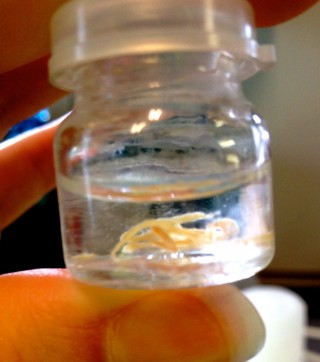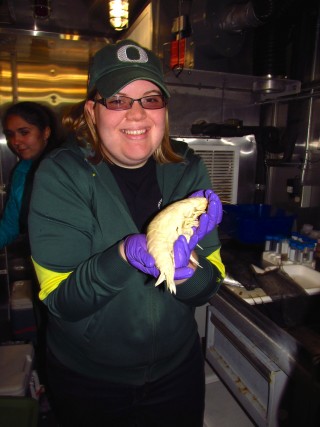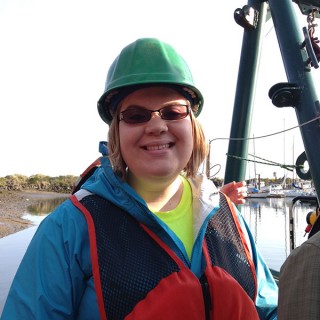
This is science so we can’t be shy – let’s take a closer look at gonads.
This is science so we can’t be shy. Gonads are sexual organs; females have ovaries and males have testes, and collectively they are called gonads. My job on this cruise is to collect the gonads from any hadal invertebrates we find. So far, that has only been amphipods, lots and lots of amphipods. Most of the amphipods are only a few millimeters in length and are far too small to dissect. Any bigger than a few centimeters, I get to cut open and go gonad hunting! It really is quite fun.
Understanding the deep

Before the HADal Ecosystem Studies (HADES) program no one had sampled gonads from hadal invertebrates. The hadal zone, which is composed primarily of ocean trenches, represents the deepest marine habitat on Earth (6,000-11,000m). These are important samples to have because they will allow us to better understand how life continues at such extremes, and of course life cannot continue without reproduction! Gonads from the amphipods we find in the trench can be compared to those of their shallow water relatives, which could show us what sort of adaptations these deep dwelling amphipods may have to the different depths, temperatures, pressures, and food inputs of the hadal zone.
Studying reproduction can also show us how communities in the different trenches are related. Amphipods are brooders, meaning the mother carries her developing eggs in a special pouch on her belly, where she can protect and nurture them until they are ready to hatch. Scientists know these brooding amphipods rise to shallower depths to release their babies, which means these new amphipods can travel across the abyssal plain and end up living in a different trench. Due to this behavior, the amphipod communities inside the trenches are actually pretty related, along with the associated bacteria communities that live on and in them.
Missing gonads

So far, I have dissected many different amphipods, from 4.5 cm to 26 cm in length, and from a range of different depths. The problem I keep running into is that I cannot always find any gonads. Where are the gonads?? I know amphipods have them and I know where they should be, but they just aren’t always there. Maybe they don’t always have them. It could be that we are finding sexually immature amphipods that have not yet developed gonads. It could also be an adaptation to ephemeral food sources. In the hadal zone, most of the food falls from shallower depths and animals often go long periods between meals. It is possible that when food is scarce, the amphipods just do not spend the energy to produce gonads. We do not know for sure, but gathering samples like I am currently doing, is the first step in finding answers!

